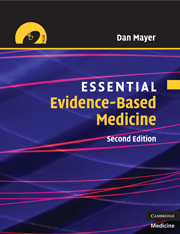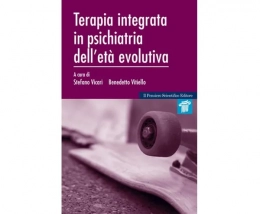Non ci sono recensioni
Essential Evidence-Based Medicine teaches the principles of research study methodology and design so that the reader can become better at critically analysing scientific and clinical studies. It describes the basic elements needed to understand biostatistics and epidemiology as applied to health care studies, and how to become a more discriminating reader of the medical literature by adopting the skills of critical appraisal. This new edition is extensively edited and updated, and includes two entirely new chapters on critical appraisal of qualitative research and communicating risks and evidence to patients. The text is geared towards the new learner, and assumes little clinical experience, starting with the basic principles of critical appraisal. A CD-ROM accompanies the book to enable students to test their learning through a series of questions, with answers provided. This is an ideal introductory text for medical students, health sciences students and a wide range of other healthcare professionals.
Features
• Includes new chapters on critical appraisal of qualitative research and communicating risks and evidence to patients
• Accompanying CD-ROM for readers to test their learning through multiple choice and short answer questions
Preface
Acknowledgements
1. A brief history of medicine and statistics
2. What is evidence-based medicine?
3. Causation
4. The medical literature: an overview
5. Searching the medical literature Sandi Pirozzo and Elizabeth Irish
6. Study design and strength of evidence
7. Instruments and measurements: precision and validity
8. Sources of bias
9. Review of basic statistics
10. Hypothesis testing
11. Type I errors and number needed to treat
12. Negative studies and Type II errors
13. Risk assessment
14. Multivariate analysis
15. Randomized clinical trials (RCTs)
16. Scientific integrity and the responsible conduct of research John E. Kaplan
17. Applicability and strength of evidence
18. Communicating evidence to patients Laura J. Zakowski, Shobhina G. Chheda and Christing S. Seibert
19. Critical appraisal of qualitative research studies Steven R. Simon
20. An overview of decision making in medicine
21. Sources of error in the clinical encounter
22. The use of diagnostic tests
23. Utility and characteristics of diagnostic tests: likelihood ratios, sensitivity and specificity
24. Bayes' theorem, predictive values, post-test probabilities, and interval likelihood ratios
25. Comparing tests and using ROC curves
26. Incremental gain and the threshold approach to diagnostic testing
27. Sources of bias and critical appraisal of studies of diagnostic tests
28. Screening tests
29. Practice guidelines and clinical prediction rules
30. Decision analysis and quantifying patient values
31. Cost-effectiveness analysis
32. Outcome analysis
33. Meta-analysis and systematic reviews
Appendix 1. Levels of evidence and grades of recommendations
Appendix 2. Overview of critical appraisal
Appendix 3. Formulas
Appendix 4. Commonly used statistical tests
Appendix 5. Proof of Bayes' theorem
Appendix 6. Using balance sheets to calculate thresholds
Glossary
Bibliography
Index




